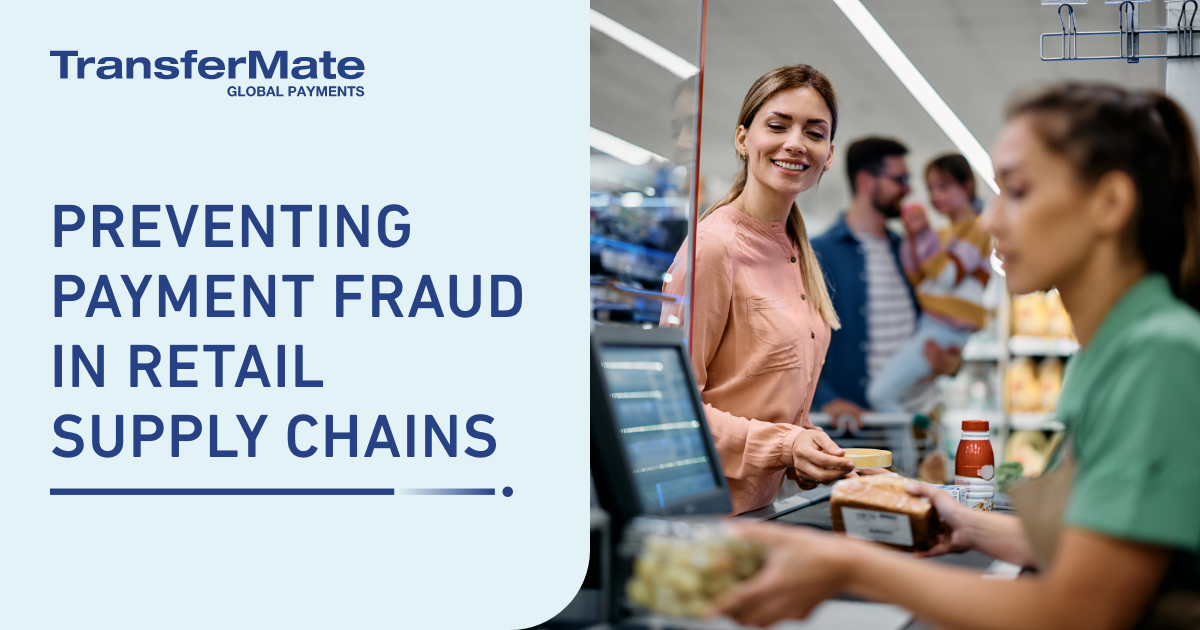
If there is one certainty within the retail sector – whether it is fashion, food, electronics etc. – is that trends change. What you are selling today is rarely what you’ll be selling in ten years’ time.
They may well be the same brand, with many of the same features, but there will be subtle changes; whether that is a slightly different type of blue for that best-selling top, a new ingredient added to the Bolognese sauce, or an upgraded processor for the latest laptop.
The same theory can be applied to payment’s fraud. While many of the tactics used by fraudsters will have a familiar look, they will constantly be subtly changing their direction of attack to target new vulnerabilities.
The retail sector, with its complex and extensive supply chains, is particularly vulnerable to fraudulent activities.
And successful attacks can severe consequences for retailers, including financial losses, reputational damage, and legal repercussions. Perhaps more serious in the long-run, fraudulent activities can erode customer trust and tarnish a retailer’s brand image, leading to a loss of business and market share.
Common Types of Payment Fraud in Retail Supply Chains
A chain is as strong as its weakest link, and there are many potential vulnerabilities within the chain of payments between retailers and their suppliers, from the initial order placement to the final payment settlement.
Payment fraud in retail supply chains can occur through various means, including stolen credit card information, identity theft, counterfeit payments, and collusion between dishonest insiders, exploiting vulnerabilities at different stages of the supply chain, from point-of-sale (POS) systems, to online transactions, and payment processing networks.
Common forms of payment fraud in retail supply chains include:
Account Takeover
Cybercriminals gain unauthorized access to legitimate retailer or supplier accounts to manipulate transactions and divert funds.
Invoice Fraud
Fraudsters manipulate or create false invoices, tricking retailers into making payments to unauthorized entities.
Identity Theft
Criminals steal personal or financial information from employees or customers to conduct fraudulent transactions.
Collusion
Internal collusion between employees and suppliers, involving the creation of fictitious orders or inflated invoices.
8 Strategies for Preventing Payment Fraud in Retail Supply Chains

The fact that fraudsters have so many angles of attack means retailers need to have a multi-pronged, adaptable and evolving protective strategy to prevent fraud, or at least mitigate against it as much as possible and reduce losses to a minimum.
1. Secure Payment Infrastructure
Retailers should leverage a secure payment infrastructure with multi-factor authentication, encryption, and tokenization to protect sensitive data and prevent unauthorized access. These measures add an extra layer of security, making it harder for fraudsters to gain unauthorized access.
This infrastructure will require constant evolution. This includes regularly patching vulnerabilities, employing the latest encryption technologies, and utilizing advanced fraud detection tools that leverage artificial intelligence and machine learning algorithms to identify suspicious patterns.
2. Real-time Transaction Monitoring
A retailer’s payments partner needs to have fraud detection systems that utilize machine learning algorithms to analyze transaction patterns, detect anomalies, and trigger alerts in real-time, allowing for immediate action to mitigate potential fraud.
3. Supplier Verification and Risk Assessment
Conduct comprehensive supplier verification processes, including background checks, credit evaluations, and reputation assessments, to ensure the legitimacy of suppliers and reduce the risk of collusion or invoice fraud.
Conduct due diligence when onboarding suppliers, verify their legitimacy, and establish clear contractual agreements that outline security requirements and responsibilities.
4. Enhanced Due Diligence
Employ enhanced due diligence procedures, such as Know Your Customer (KYC) and Know Your Supplier (KYS) protocols, to verify the identities and legitimacy of retailers and suppliers, thereby minimizing the risk of identity theft and account takeover.
5. Education and Training
Offer educational resources and training programs to retailers to your employees, raising awareness about payment fraud risks, common tactics employed by fraudsters, and best practices for fraud prevention.
6. Collaboration and Information Sharing
Actively collaborate with industry partners, regulatory bodies, and law enforcement agencies to share information about emerging fraud trends, exchange best practices, and enhance fraud prevention efforts collectively.
7. Data Analytics and Predictive Modeling
By leveraging data analytics and predictive modeling techniques, identify patterns, trends, and potential fraud indicators to proactively prevent fraudulent activities within retail supply chains.
Using this data is the most crucial, and often overlooked, step. Strategies need to be refined and updated to match the criminal activity.
8. Having Robust Data Security Measures
Protecting sensitive customer and payment data is paramount. Retailers should employ robust data encryption techniques, restrict access to authorized personnel only, and regularly audit their data security protocols to ensure compliance with industry standards and regulations.
Moving with the trends
There aren’t many surer things in life that fraudsters will move with the times. They will constantly try to get ahead of the security systems that are trying to keep them out and will always prod and test the protective layers retailers and their payment providers put in place.
So, the first and foremost strategy for protecting your retail supply chain is to be a trendsetter.
Using sophisticated payment systems, with regulated payment networks and robust anti-fraud procedures, is a must, but it is how we evolve those systems that really matters. After all, we wouldn’t want to be caught at a party wearing a top with the slightly wrong shade of blue.
If you want to talk to the TransferMate team and learn how we can keep your retail payables and receivables safe from fraudsters, contact us here.



